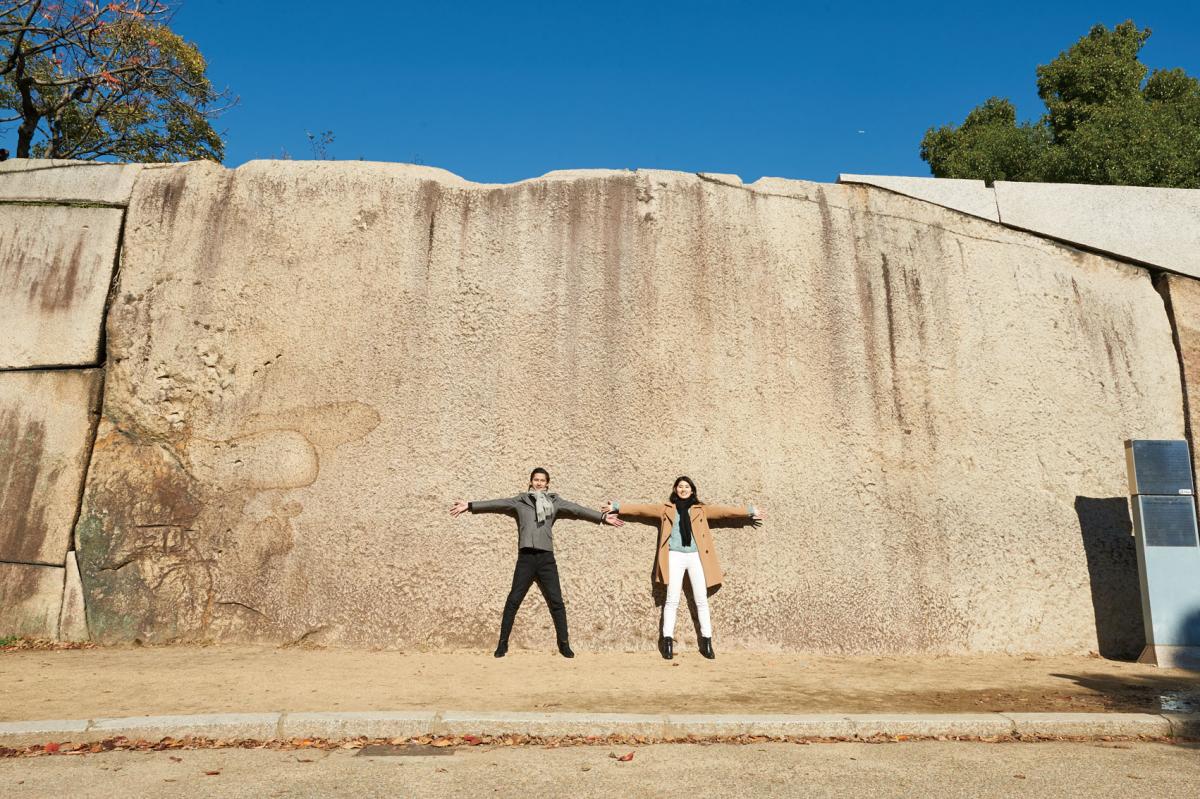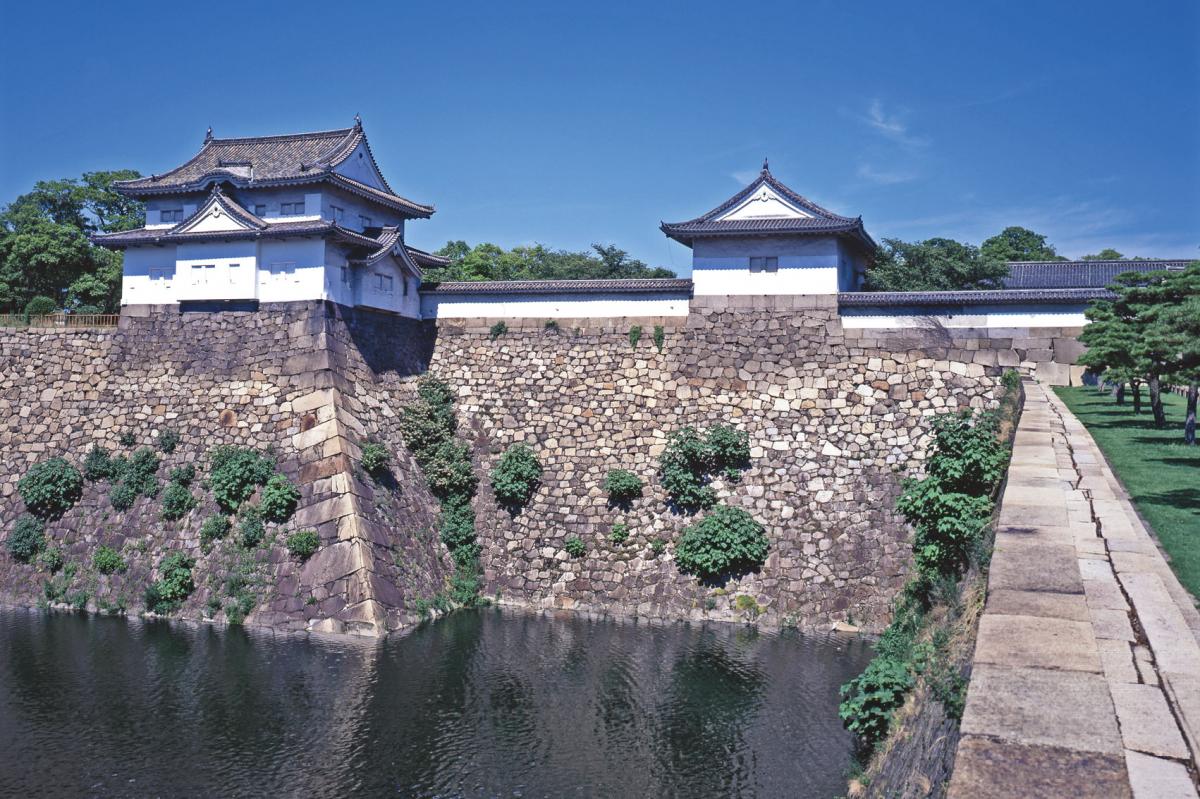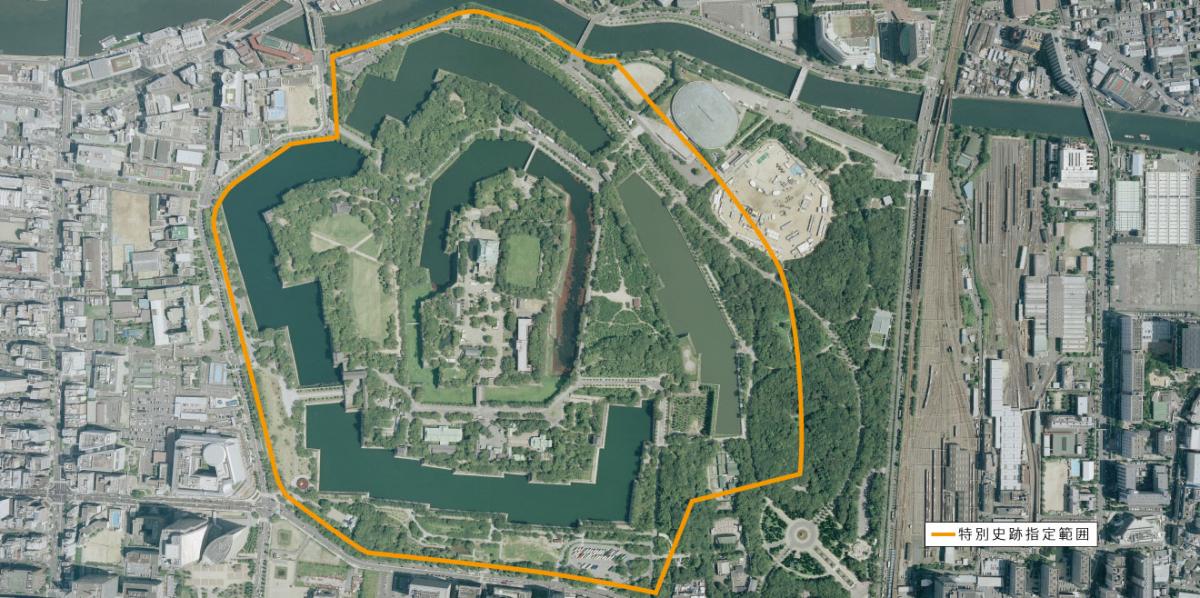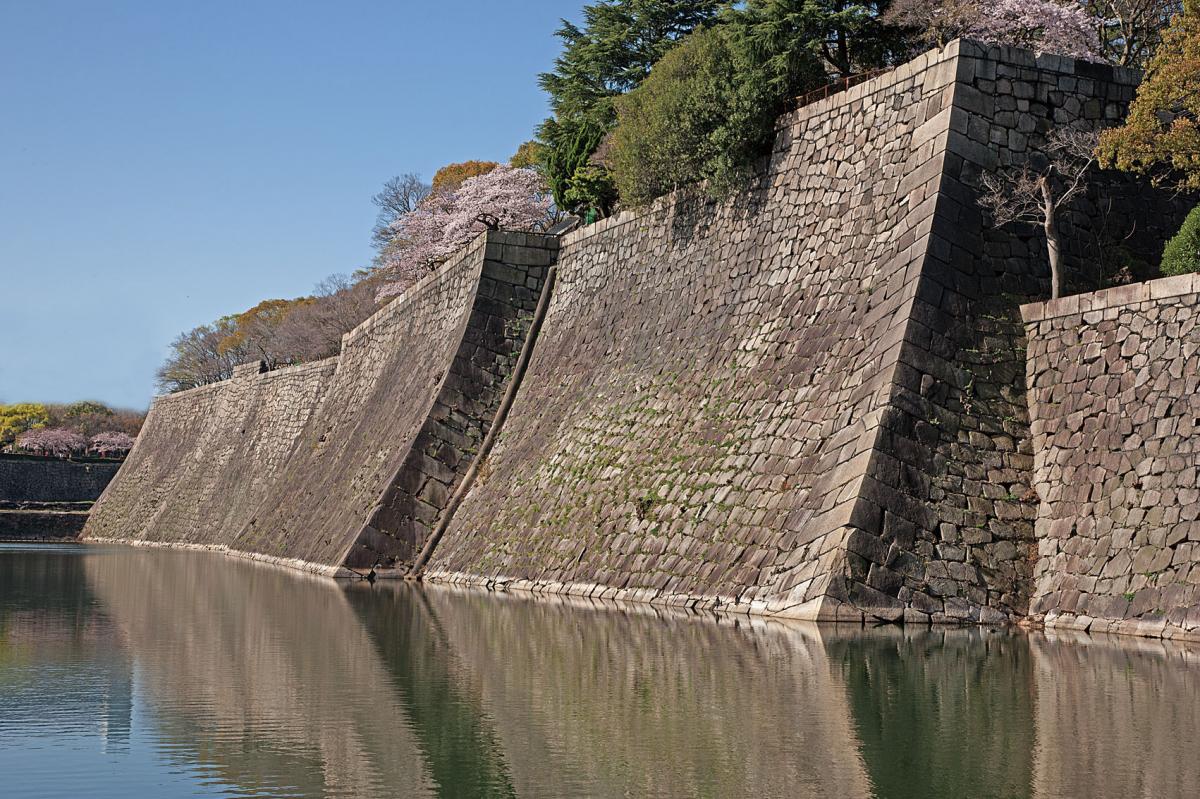Osaka Castle, a Special Historic Site
Osaka Castle stands on the edge of the Uemachi Plateau, which runs North to South across the Osaka Plain. From ancient times, the area served as a transport hub, connected to Japan’s western provinces and to East Asia by the Seto Inland Sea, and to central Kinai (Nara and Kyoto) by river.
In 1496, Rennyo, the 8th Monshu, or head priest, of the Hongan-ji Temple, built the Osaka (Ishiyama) Gobo, a temple and monks’ quarters in the area, which, in 1533, became the headquarters of the Jodo-shinshu Hongan-ji School of Buddhism. Renamed as Osaka (Ishiyama) Hongan-ji, the fortress, which boasted strong defensive facilities, was renowned as “the finest castle in Sesshu.” The Osaka (Ishiyama) Hongan-ji fought the ten-year Ishiyama Hongan-ji War against Nobunaga Oda, who sought to unify Japan by military force, but in 1580 the Hongan-ji surrendered and left the area. The Hongan-ji site was appropriated by Nobunaga Oda as Osaka Castle, but after Nobunaga’s violent death in the Honno-ji Incident, Nobunaga’s successor Hideyoshi Hashiba (later Toyotomi) began constructing the castle in 1583 on the site of the former temple.
Hideyoshi built Osaka Castle as a base from which to unify the whole of Japan, and the scale and grandeur of the new castle far exceeded Nobunaga’s Azuchi Castle. However, during the Summer War of Osaka in 1615, the final battle between the Toyotomi and Tokugawa clans, Osaka Castle fell to Ieyasu Tokugawa, who then rebuilt it over a ten-year period from 1620.
This new castle, built by the Tokugawa government, is the Osaka Castle that we see today. The total length of the stone walls, which contain around a million stones, is about 12km, and the continuation of the granite block high stone walls measuring more than 30m from top to bottom is esteemed as the pinnacle of Japanese castle construction technology.
Tokugawa’s reconstruction was designated as a historic site in 1953, as one of Japans principle castles, and as a special historic site in 1955, as a symbol of Japanese national culture. The other 13 structures in the castle grounds have been designated as important cultural assets, and these include important technological structures, such as Tamon-yagura Turret, the largest hall turret in Japan; the Ensho-gura Gunpowder Storehouse all built of stone; and the Kinzo Treasure House, the only structural remnant of a government treasure house.
Although Osaka Castle was used as a military base from the Meiji period, in 1931, when the current Main Tower and the Headquarters of the Fourth Army Division(now MIRAIZA OSAKA-JO) were built, funded donations from Osaka citizens, Osaka Castle Park opened in an area around the castle grounds. This marked the beginning of the Castle Park seen and enjoyed today.
Thus, Osaka Castle has always occupied center stage in the history of the city, undergoing many transformations on the way. Osaka Castle and Osaka Castle Park are much loved symbols of Osaka, and we hope to continue conveying their appeal for many years to come.
The largest stone found in a Japanese castle

Structures from the Edo period



The highest stone wall in Japan

Magnificent moats


